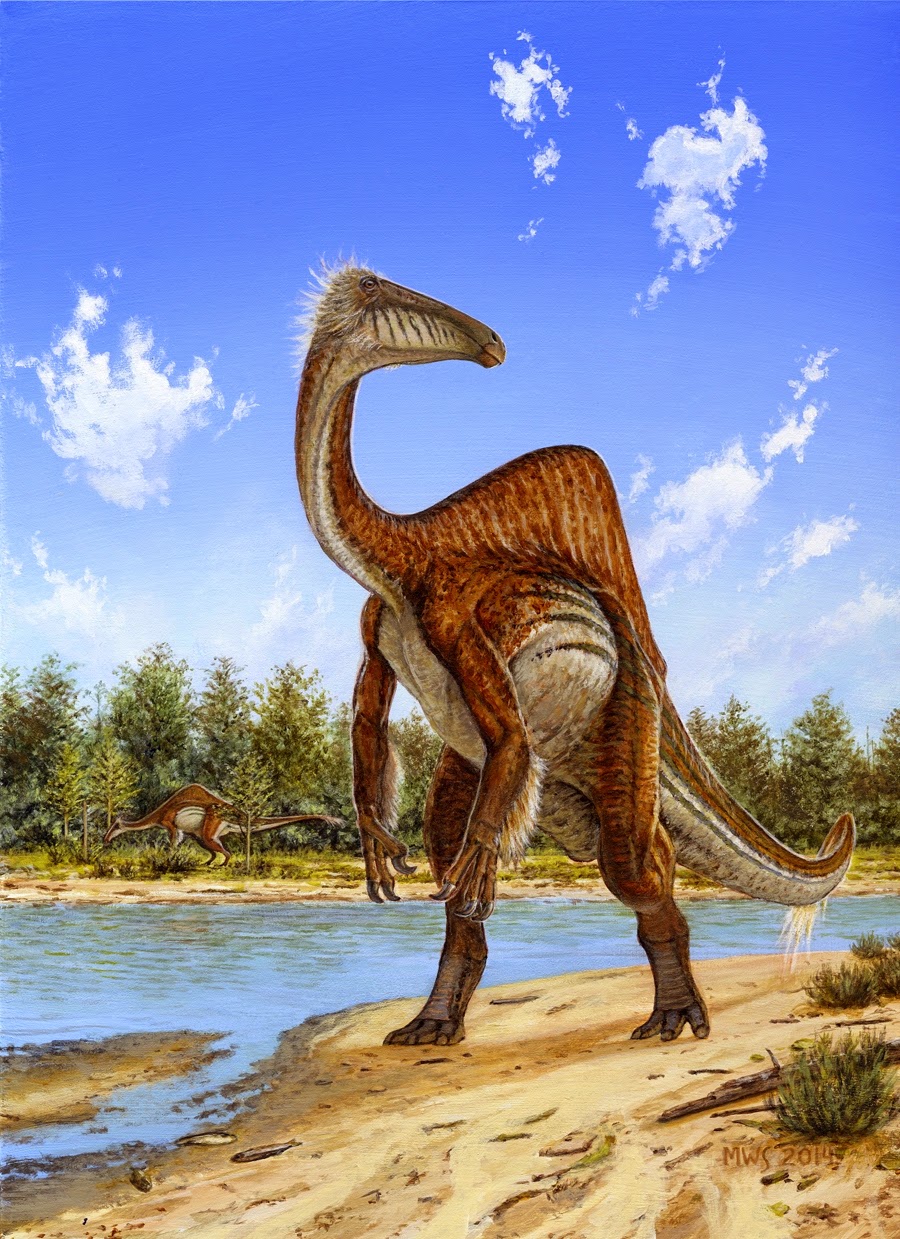
A large bipedal dinosaur once known only from fossils of its long arms and a few isolated bone fragments turns out to be a hump-backed, big-bellied beast almost the size of Tyrannosaurus rex, suggest Mongolian fossils newly described in Nature1. Few scientists could have imagined the behemoth’s distinctive combination of features from the smattering of bones previously in hand.
“This is an entirely new body plan” for such dinosaurs, says Stephen Brusatte, a vertebrate palaeontologist at the University of Edinburgh, UK.
Fossils of Deinocheirus mirificus — a pastiche of Greek and Latin meaning ‘unusual horrible hand’ — were first unearthed in the summer of 1965 in the Gobi Desert in southern Mongolia. Along with a few rib and vertebra fragments, the remains included a remarkable set of shoulder girdles and 2.4-metre-long forelimbs, the longest yet found for a bipedal animal of any era (although some flying animals, notably pterosaurs, had longer wings).
Eventually, scientists placed Deinocheirus in a subgroup of theropod dinosaurs known as ornithomimosaurs (‘bird-mimicking lizards’) — which makes them relatively close kin to fierce predators such as T. rex and Allosaurus, says Yuong-Nam Lee, a vertebrate palaeontologist at the Korea Institute of Geoscience and Mineral Resources in Daejeon, South Korea, and a co-author of the study.
Near-complete skeleton
In expeditions to the Gobi Desert in the past decade, Lee and his colleagues have unearthed the 70-million-year-old fossils of two more individuals of the species from sites near to where the original 1965 specimen was discovered. Together, those remains — along with some bones stolen by poachers before Lee and his team found the fossils, but since recovered from a private collection — account for about 95% of the creature’s skeleton, he notes.
The newer-found bones differ from those of other ornithomimosaurs in several unexpected ways. Most of the spinal vertebrae have blade-like projections that extended upward and served as anchors for a network of ligaments that probably helped to support the immense weight of the creature’s abdomen. The researchers estimate that Deinocheirus was about 11 metres long and tipped the scales at more than 6.3 tonnes.
“This is definitely an unusual animal,” says Thomas Holtz, Jr., a vertebrate palaeontologist at the University of Maryland in College Park, who wrote an accompanying News & Views piece2. “It had more of a ‘beer belly’ than your typical ornithomimosaur,” he suggests.
No teeth
Deinocheirus had a skull more than a metre long. Although the creature lacked teeth, it had a keratinous beak that could be used to nip at tender vegetation. A deep lower jaw probably housed an immense tongue that could have helped to suck up plants from the bottoms of rivers and lakes. Stomach contents preserved in the fossils, including fish vertebrae and scales, suggest that Deinocheirus also consumed large quantities of aquatic prey.
As well as its wide hips and big feet, Deinocheirus had broad toes, which helped to prevent it from sinking into soft sediments while foraging, suggest the researchers. The last bone in each of its toes was flattened and had a blunt tip, unlike the tapered tips seen in the toes of all other theropod dinosaurs.
Using data gleaned from the fossils, Lee and his colleagues have created a video that shows how Deinocheirus might have looked and, more amusingly, how it may have walked.
“This creature wasn’t built for speed,” says Brusatte. “That’s pretty obvious.”
Note : The above story is based on materials provided by Nature doi:10.1038/nature.2014.16203










